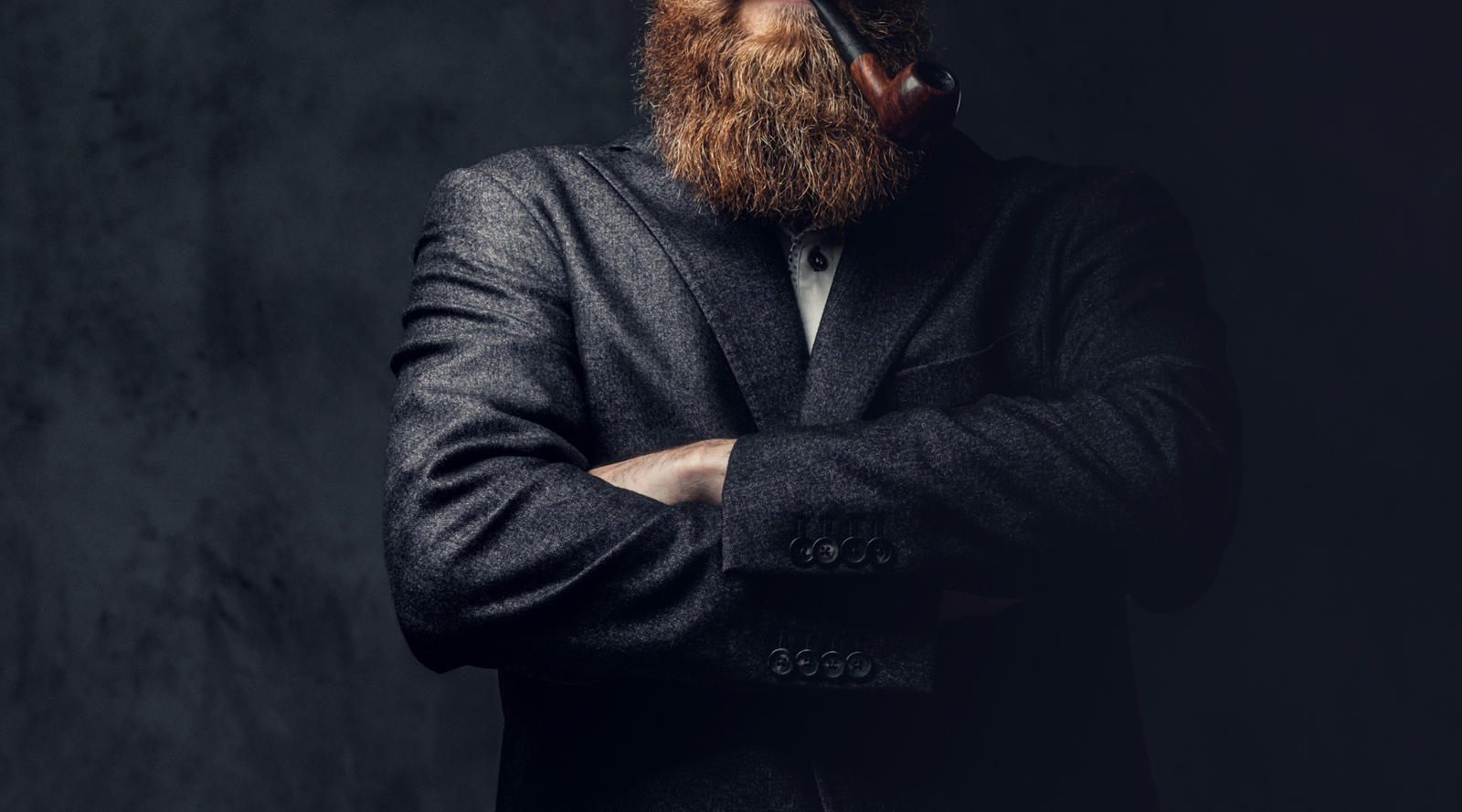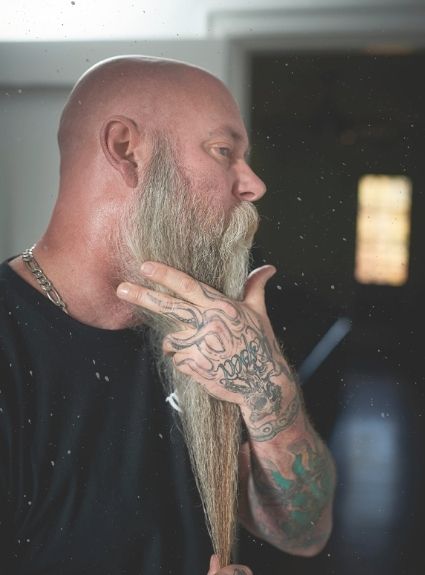🍁 Made In Canada 🍁 Free Shipping in Canada over $70 🍁
🍁 Made In Canada 🍁 Free Shipping in Canada over $70 🍁

The History and Benefits of Growing a Beard
September 08, 2023 4 min read
THE AGE-OLD EMBLEM OF MASCULINITY: BENEFITS AND HISTORY OF GROWING A BEARD
Facial hair has been a symbol of masculinity, wisdom, and style for centuries. From the bushy beards of ancient civilizations to the meticulously groomed mustaches of the Victorian era, men's facial hair has gone through various phases throughout history. In this blog post, we will journey through time to explore the fascinating history of men's facial hair, its cultural significance, and how it has evolved over the years to become what it is today.
Ancient Times: A Sign of Wisdom and Status
In ancient times, facial hair was often associated with wisdom and social status. In Egypt, for example, pharaohs and noblemen proudly sported elaborate beards to symbolize their authority. The beard was so revered that fake beards made of metal or hair were worn by those who couldn't grow a full one naturally.
Similarly, in ancient Greece, philosophers like Socrates and Plato were known for their impressive beards, which were seen as a sign of intellectual depth. Soldiers often sported beards as a symbol of masculinity, virility, and strength. But, the trend shifted with Alexander the Great, who encouraged soldiers to shave to prevent enemies from grabbing their beards in battle.
In early Roman times, beards were popular among the upper classes, while the lower classes were generally clean-shaven. However, the trend reversed during the late Roman Republic and early Roman Empire, with emperors like Julius Caesar and Augustus promoting a clean-shaven look.
The Middle Ages: Beards and Barbarians
During the Middle Ages, the perception of facial hair went through some changes. Beards remained popular among kings and nobility, but they also became associated with warriors and barbarians. The Vikings, for instance, were known for their fierce beards and braided mustaches.
In the Christian world, beards took on a religious significance. Many early Christian monks and hermits grew long beards as a symbol of their devotion and asceticism. Beards were often seen as a mark of holiness and wisdom.
The Renaissance: A Return to Elegance
The Renaissance marked a shift in facial hair trends. As the arts and culture flourished, men sought to emulate the refined aesthetics of the era. Beards became smaller and neater, and men began to groom their facial hair meticulously.
Artists like Leonardo da Vinci and Michelangelo sported well-groomed beards and mustaches, which became a symbol of artistic and intellectual sophistication. The fashion of the time also favoured a clean-shaven face with a pointed beard, known as the "Van Dyke" style, after the Flemish painter Anthony van Dyck.
The Victorian Era: Facial Hair Extravaganza
The 19th century brought about a facial hair revolution in the form of extravagant beards and mustaches. The Victorian era saw men from all walks of life embracing facial hair in a big way. Styles like the "mutton chops," "sideburns," and "handlebar moustaches" became immensely popular.
Facial hair once again became a symbol of masculinity, and men spent hours grooming and waxing their mustaches into intricate shapes. Moustache cups, designed to protect facial hair while drinking, became a common household item.
Modern Times: The Ebb and Flow of Styles
The 20th century witnessed a series of shifts in facial hair fashion. The clean-shaven look regained popularity during the early 1900s, partly due to the advent of the safety razor. Moustaches saw a brief resurgence in the 1970s, thanks in part to cultural icons like Tom Selleck and Burt Reynolds.
Today, facial hair styles vary widely, from the classic beard and stubble to the more elaborate facial locks sometimes seen at beard competitions around the world. Styles and tastes change, and the popularity of facial hair comes and goes, largely influenced by trends, cultural movements, and personal preferences.
Beard Benefits: From Personal to Practical
The benefits of facial hair depend entirely on your personal situation and the style you choose to sport. A beard can offer substantial protection against the cold for men in northern climates where temperatures often dip to -40° Celsius and winter lasts nine months of the year. A thick beard can also serve as a natural sun barrier, protecting your skin from the harmful effects of UV rays, reducing the risk of sunburn and potentially lowering the chances of skin cancer in the lower part of the face. A well-groomed beard can make men look more mature and distinguished, which can be helpful in leadership positions. For many, growing a beard enhances self-confidence. Just as clothing and hairstyles can convey personality, so can facial hair. A beard style can reflect an individual's personality, creativity, rebelliousness, or sophistication.
The history of men's facial hair is a testament to its ever-changing significance and the diverse cultural factors that shape our perceptions of masculinity and style. From the wisdom of ancient philosophers to the extravagance of the Victorian era and the modern-day embrace of diverse styles, facial hair continues to be a fascinating aspect of men's grooming and self-expression. Whether you're a fan of the bearded look or prefer the clean-shaven aesthetic, one thing is clear: the history of men's facial hair is a rich tapestry of traditions, trends, and personal choices.
Leave a comment
Comments will be approved before showing up.
Recent Articles
- Black Friday Starts at Midnight
- The Mammoth Trick or Treat Event Has Begun
- Highland Ember: A Scent Forged in Smoke and Story
- How Summer Affects Hair Follicles: What Every Bearded Guy Needs to Know
- Recap: 8th Annual Alberta Beard & Moustache Competition.
- Win a $100 Gift Card Just for Showing Off Your Beard
- The Ultimate Guide to Mammoth Beard Oils
- The Ultimate Guide to Mammoth Beard Balms
- How and Why to Clean Your Boar Hair Brush: A Step-by-Step Guide
- Important Shipping Update: Canada Post Strike
Subscribe
Sign up to get the latest on sales, new releases and more.

Want to be a Mammoth Insider?
Receive 10% off your first order + be the first to know about news, sales, and new product releases!